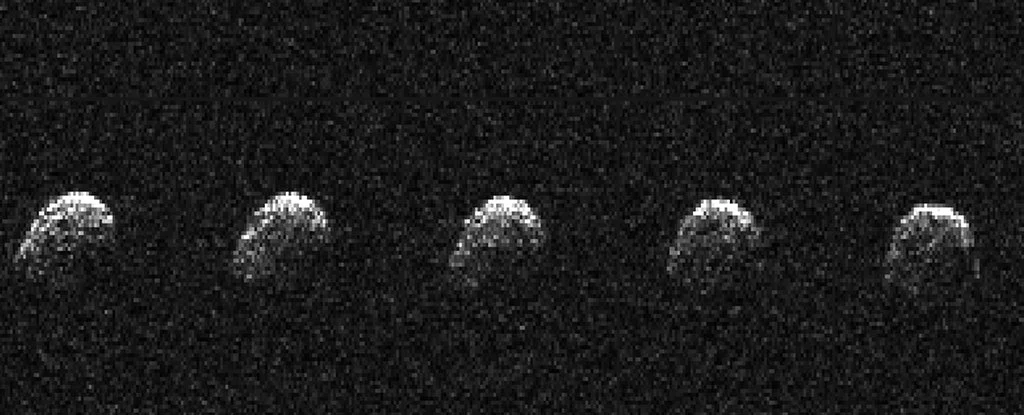
An asteroid will fly past Earth today. Should you be worried?

A large asteroid about 330 metres in diameter is due to make a flying visit past Earth on December 11.
A little bit smaller than the height of the Empire State Building in New York City, ‘4660 Nereus’ is a frequent visitor to near-Earth space. The last time it flew past the planet was on March 22, 2011. The next visit is expected on March 2, 2031.
4660 Nereus will skim by at a safe distance of 3.93 million kilometres – just over 10 times the distance between Earth and the Moon.
4660 Nereus is classified as a potentially hazardous object. That classification includes any asteroid that will pass within 7.48 million kilometres below (0.05 astronomical units) of Earth’s orbit, and is larger than about 140 metres across.
Asteroids are rocky objects revolving around the Sun that are too small to be called planets. They are also known as planetoids or minor planets. There are millions of asteroids, ranging in size from hundreds of kilometres to several metres across.
According to US space agency NASA, scientists have identified more than one million asteroids to date.
Asteroids lie primarily within three regions of the solar system. Most lie in a vast ring between the orbits of Mars and Jupiter. This main asteroid belt holds more than 200 asteroids larger than 100 kilometres in diameter.
Near-Earth asteroids, or NEAs, circle the sun at about the same distance as our planet does. These objects are split into sub-categories based on how the asteroid’s orbit compares to Earth’s, according to NASA.
- Atiras: NEAs whose orbits are entirely within the orbit of the Earth
- Atens: Earth-crossing NEAs with axes smaller than that of Earth’s
- Apollos: Earth-crossing NEAs with axes larger than Earth’s
- Amors: Earth-approaching NEAs with orbits exterior to Earth’s but interior to Mars’
Other flypasts
On December 11, five other near-Earth objects (NEOs) will make close approaches. According to NASA, 2021 WV1, 2021 WJ3, 2021 XD2, 2021 XG, 2021 WV1 will fly by the planet. 2021 XG is an Aten, while the other four are Apollos.
How often do asteroids hit earth?
Ever since Earth formed about 4.5 billion years ago, asteroids and comets have routinely slammed into the planet.
As asteroid capable of global disaster would have to be more than a quarter-mile wide. Such an impact would raise enough dust into the atmosphere to effectively create a “nuclear winter”, severely disrupting agriculture around the world. Asteroids that large strike Earth only once every 1,000 centuries on average, NASA says.
Smaller asteroids that are believed to strike Earth every 1,000 to 10,000 years could destroy a city or cause devastating tsunamis.
On February 15, 2013, an asteroid slammed into the atmosphere over the Russian city of Chelyabinsk, creating a shock wave that injured 1,200 people. It was thought to have measured 20 metres wide when it entered Earth’s atmosphere


